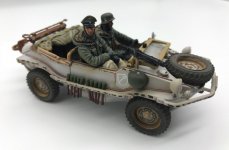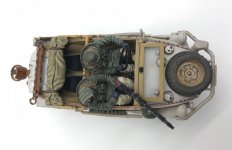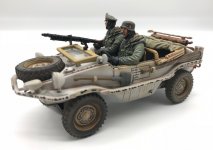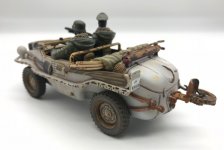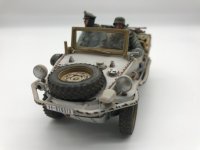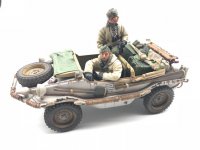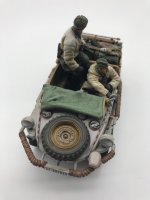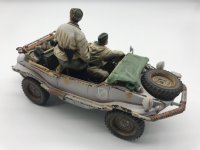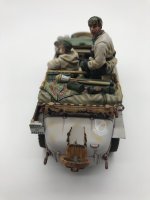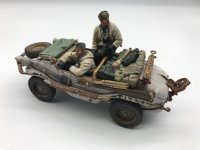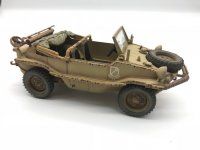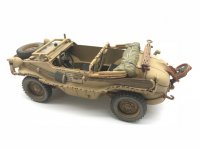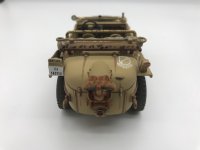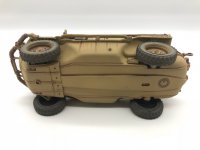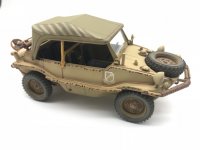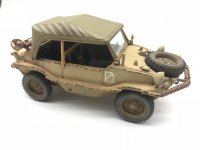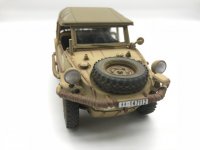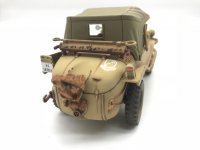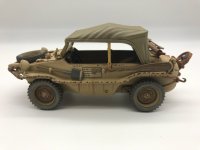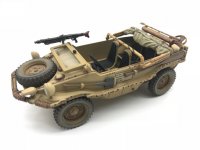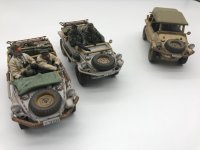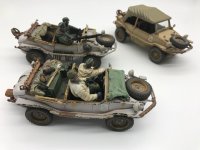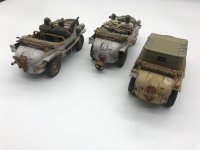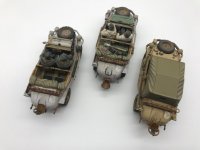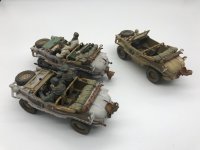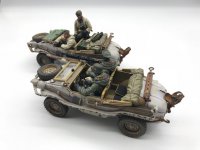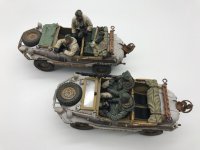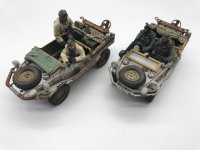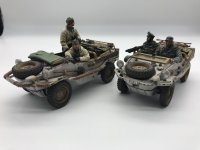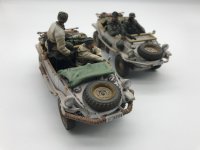Volkswagen 166 amphibious bodytub German car is also called the "Schwimmwagen", "Schwimm" and "Wagen" meaning "swimming" and "car" respectively. In early 1940, the German military commissioned Volkswagen to develop an amphibious vehicle suitable for use in transversing staggered areas of water networks.
Accordingly to the military's request, Ervin Komanda (Erwin Komenda), first body designer of Ferdinand Porsche (Ferdinand Porsche), designed a new integrated body structure - the Volkswagen 166 amphibious car. The 166 vehicle made extensive use of the engine and mechanicals of the Volkswagen 86-type four-wheel drive vehicle prototype and the 87-type four-wheel drive "Beetle" command car.
From 1942 to 1944, the 166 Schwimmwagens were produced by Volkswagen in the Fallersleben/Wolfsburg and Porsche factories in Stuttgart. A total of 15,584 vehicles were made, making this the most mass-produced amphibious vehicle in history. The 166 Schwimmwagens were put into service in the battlefield at the end of 1942, mainly equipping the SS of the Third Reich, on the battlefield of Kharkov, especially for the reconnaissance units of command divisions. Meanwhile, in order to prepare for the Battle of Kharkov, the German stronghold had retained a group of troops originally belonging to the Rommel Desert Corps. Thus, many of the vehicles received by the SS were still painted in yellow, and the front-line troops hastily coated them with white paint on the outer surface for winter camouflage.
